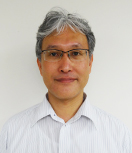
Hiroyuki Sato
Associate Professor
Information Technology Center
http://www-sato.cc.u-tokyo.ac.jp/SATO.Hiroyuki/
The University of Tokyo’s Asano Campus is built on a small hill that was known as Mt. Asano in the distant past. Geographically, it is located on the easternmost edge of the Hongo terrace beyond which spreads eastward the lowland area of Yanesen (the Yanaka, Negishi and Sendagi districts). In the Edo period, the place where the Campus now stands was part of the second residence of the Mito Domain. Today, this fact can be found mentioned on campus only in the text engraved on the Mukaigaoka-no-ki Monument, which was designated as one of the Promenade of Knowledge* sites by the University (the left edge of Picture 1).
If you look up at the Asano Campus from below, you will immediately be able to tell that the Campus stands on the top of a hill (Pictures 2 and 3). Indeed, reaching the Campus requires an uphill climb in most cases (Picture 1 shows a slope from the Asano South Gate close to the Information Technology Center, while Picture 4 shows a slope leading to a staff apartment building). From these pictures, you may think that the Campus is covered with lush greenery. Actually, however, it is just overgrown with weeds and other natural vegetation.
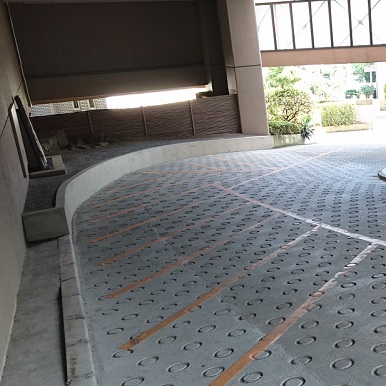 The text and poem on the Mukaigaoka-no-ki Monument were engraved by none other than the author himself, Nariaki Tokugawa, the 9th lord of the Mito Clan
The text and poem on the Mukaigaoka-no-ki Monument were engraved by none other than the author himself, Nariaki Tokugawa, the 9th lord of the Mito Clan The Asano Campus as seen from the Nezu district
The Asano Campus as seen from the Nezu district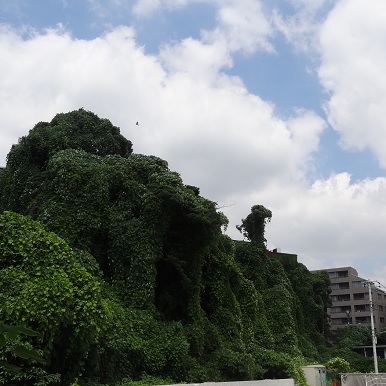 The Asano Campus as seen from the Ikenohata district
The Asano Campus as seen from the Ikenohata district
By virtue of being on the top of a hill, the Campus commands spectacular views of every direction. Once you reach the top, you can enjoy a good view like Picture 6, which shows a panorama of the Yanesen area as viewed from the Kumamoto Terrace. (The Kumamoto Terrace, which is on the rooftop of the Faculty of Engineering Building 9, was constructed to commemorate the relationship between the Faculty of Engineering and Kumamoto Prefecture. Picture 3 is taken in the direction of the Kumamoto Terrace from below. It looks like the view from up there would be great, don’t you think?)
 The Asano Branch of the University Co-op is also located on the ground floor of the building in the center of the picture
The Asano Branch of the University Co-op is also located on the ground floor of the building in the center of the picture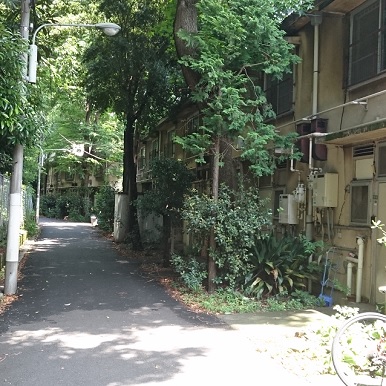 The building on the right is a staff apartment building that is still in use
The building on the right is a staff apartment building that is still in use Kumamoto Terrace is also an ideal location for a BBQ
Kumamoto Terrace is also an ideal location for a BBQ
Meanwhile, the Asano Campus has long been known as a place with a number of large-scale experimental facilities. Accordingly, the types of people who have had the experience of going in and out of the Asano Campus to work, research or study are limited to an extent, and perhaps they are rather few in number. Picture 8 shows an old guideboard that has survived to this day (I think that this guideboard is historically important because it shows facilities that do not exist anymore), from which you can discover buildings that were once on campus, including a facility housing large computers, a nuclear-related facility and a building for wind tunnel experiments. You can also see that some of the buildings that are currently in use, such as the Isotope Science Center, already existed when this guideboard was placed. The location where the Large Structure Testing Laboratory once stood is now home to the Takeda Building, which was constructed in 2003 (Picture 9). Installed in the underground floor of this building is a clean room that is said to be the "place with the cleanest air within the Yamanote Line circle." Doesn’t this kind of facility just perfectly match the “large-scale experimental facilities” image of the Asano Campus? Incidentally, a new piece of Yayoi pottery was unearthed during the construction of the Takeda Building. Amazing, huh?
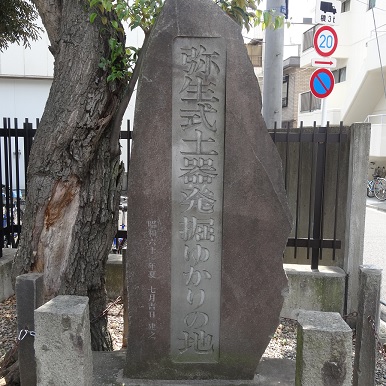 The monument’s address is 2-11 Yayoi-cho, Bunkyo-ku, Tokyo
The monument’s address is 2-11 Yayoi-cho, Bunkyo-ku, Tokyo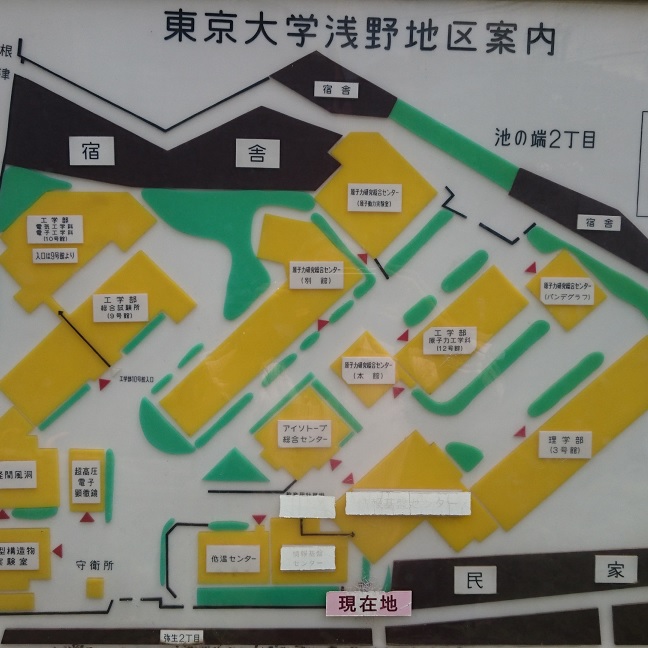 There are a few old guideboards throughout the Asano Campus
There are a few old guideboards throughout the Asano Campus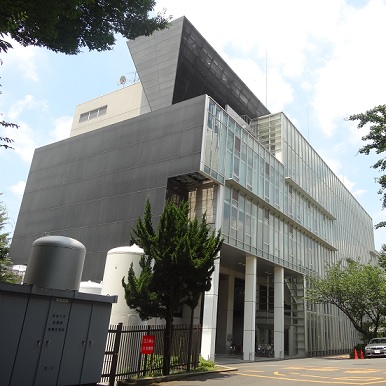 The building is named after Mr. Ikuo Takeda, who gave a generous donation for its construction
The building is named after Mr. Ikuo Takeda, who gave a generous donation for its construction
As mentioned before, the Asano Campus stands on the top of Mt. Asano. The structures of the buildings on the Campus vividly tell of the difficulties planners went through during design and construction because of the scarcity of level ground. For instance, you can find ground-level exits on various floors of the campus buildings. Such layouts are perhaps reminiscent of those found in Japanese mountaintop hot spring resorts. When I was a student, I occasionally visited my friend in his laboratory on the underground floor of Faculty of Engineering Building 12. After entering the building from the main lobby on the ground floor, I was able to reach the ground from the exit on the underground floor without returning to the main lobby. It took me a while to get used to this layout, and I was really puzzled by it until then. Taking a closer look, you will see that there are many other similar buildings on the Asano Campus. In addition, outdoor staircases adjacent to buildings can be commonly seen around Campus. These outdoor staircases contribute to the dungeon-like atmosphere (Pictures 13, 14 and 15).
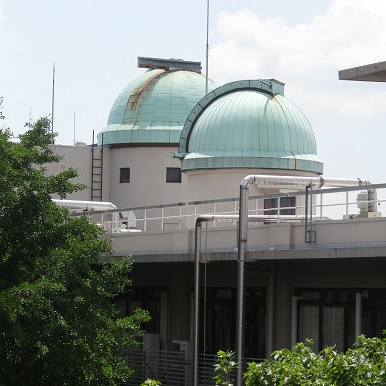 The reflecting telescopes housed in the domes on the roof of Faculty of Science Building 3 have apertures that are 30 cm in diameter
The reflecting telescopes housed in the domes on the roof of Faculty of Science Building 3 have apertures that are 30 cm in diameter Large-scale tanks used for experiments can be found across the Asano Campus
Large-scale tanks used for experiments can be found across the Asano Campus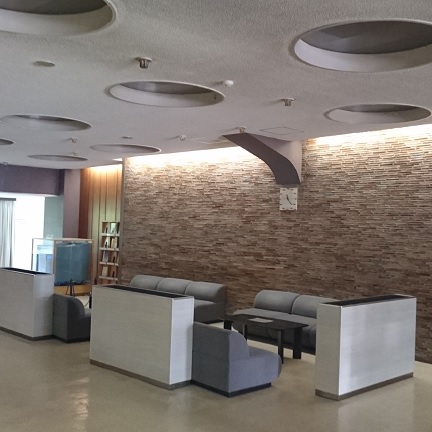 The lobby of the Information Technology Center is characterized by circular ceiling accents
The lobby of the Information Technology Center is characterized by circular ceiling accents
 The Faculty of Engineering Building 12 also houses some laboratories of the Graduate School of Education
The Faculty of Engineering Building 12 also houses some laboratories of the Graduate School of Education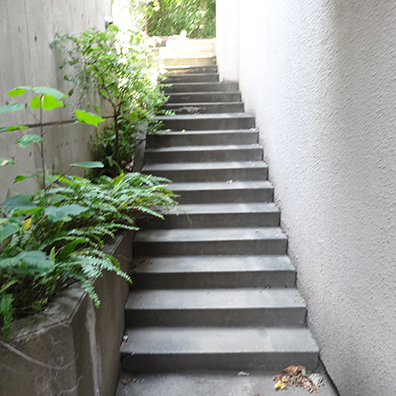 The Faculty of Engineering Building 10 contains laboratories related to electronic engineering and other such disciplines
The Faculty of Engineering Building 10 contains laboratories related to electronic engineering and other such disciplines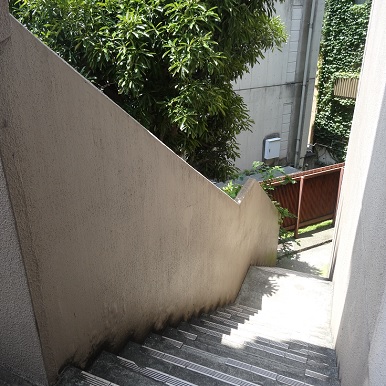 The Information Technology Center has promoted research in information processing both outside and inside the University
The Information Technology Center has promoted research in information processing both outside and inside the University
**This article was originally printed in Tansei 33 (Japanese language only).






